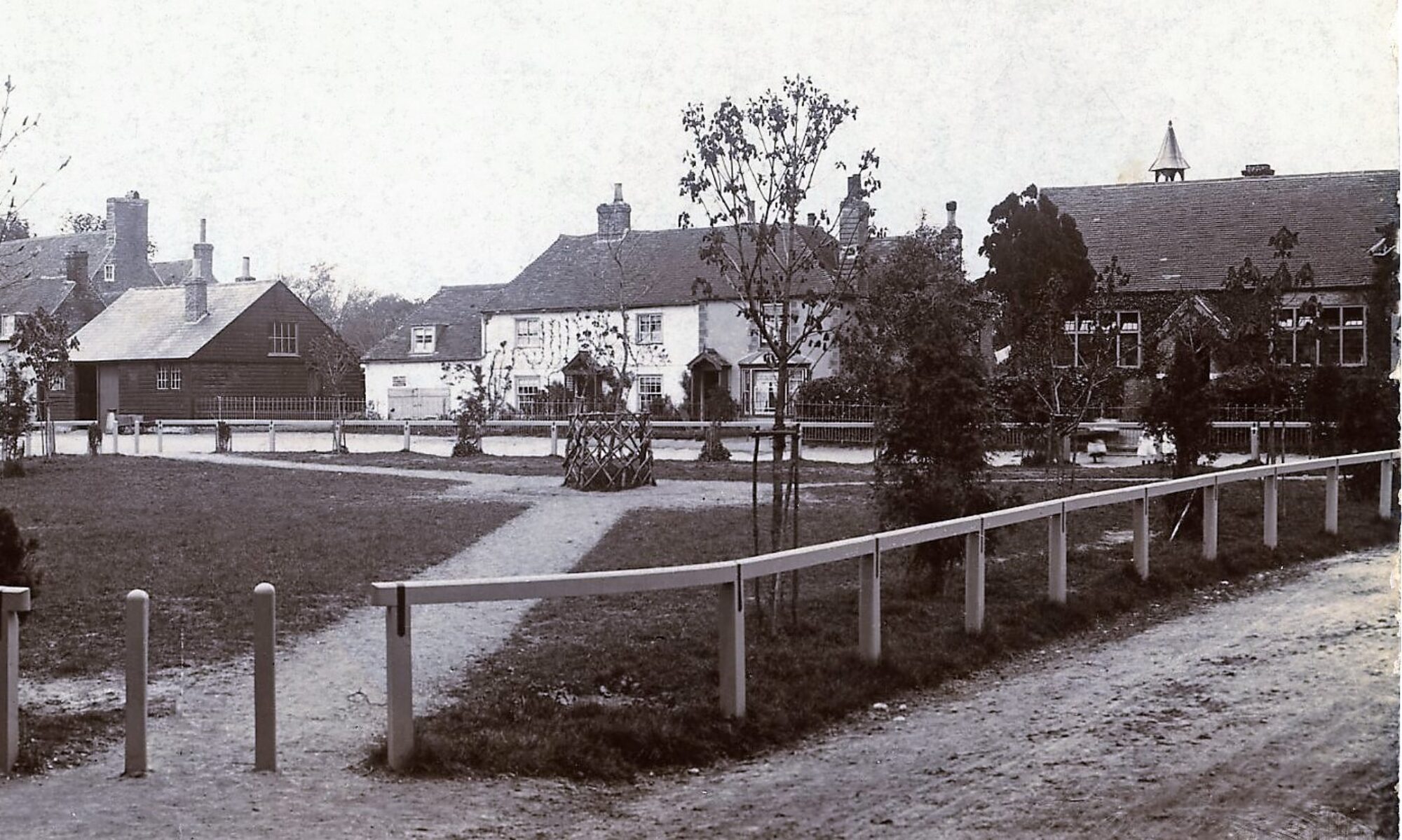St Andrew’s Church is situated adjacent to the village green, pub and the old primary school. It is a well cared for Victorian church building which is much loved by the community and a valued part of the life of the thriving village of Shepherdswell.
As with most sites in this area the Church has played a major role in managing and developing the village of Shepherdswell.
St. Andrews Church occupies a site of continuing Christian worship since at least the Domesday Book, 1086. It was thought to have originally been a wooden Saxon Church that was replaced around the 12th century with the two-celled Romanesque church – shown below left.
The first picture (below left) is an unknown sketch and the second (below right) a very early photograph taken from the Forge.
The old church was demolished in the late 1850’s to make way for the current church. Local legend has it that the old church was demolished as it was falling down but research has recently found that this may have been simply an excuse. It was felt among the parishoners that the old church did not adequately meet their needs.
The current church is entirely Victorian and is a building of great charm designed by Benjamin Ferrey in 1863. It is built of local flint with Bath stone dressings and is distinguished by a little spirelet over, but not quite on, the west end. The interior is simple and consists of nave, apsidal chancel and little transepts. The east windows are by the St Helens Crown Glass Co., and represent the Ascension and Four Evangelists. The south window of 1900, by Kempe, shows the Epiphany. The good polished marble decorative shafts to either side of the chancel arch, together with the corbels in the nave, are typical of Ferrey’s work. It is a pity that the original font, which was of fine Cornish marble and had matching marble shafts, had to be destroyed, owing to its instability, in 1955.
For the brief period the church was inactive when burials and weddings were held mostly in the St. John the Baptist Church in Barham.
The building is normally open during daylight hours, the Visitor’s book attests that this is appreciated. There is an increasing number of pilgrims walking the Via Francigena (between Canterbury and Rome). Members of the community also value the quiet space and sanctuary of the building.






